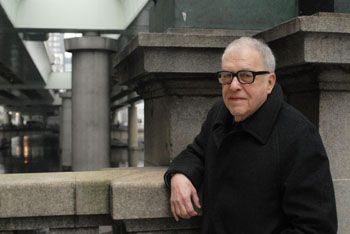He saw Ginza when it was a blackened plain but for the bombed-out Mitsukoshi department store, the Hattori Building and a handful of other structures left standing. He observed the city as it was rebuilt, and its people. He observed, and then he wrote.
New Year's Day 2007 marks the 60th anniversary of the arrival in Japan of this newspaper's longest-serving and most distinguished columnist, Donald Richie. Richie came to Tokyo as a civilian typist for the U.S. Occupation forces in 1947, less than 18 months after Japan's surrender in World War II. He soon became a film critic for The Pacific Stars and Stripes newspaper, before returning to the United States in 1949 to study film at New York's Columbia University. On his return to Japan in 1953, he began to write film criticism for The Japan Times. Apart from a stint as the first curator of the New York Museum of Modern Art's film department from 1968 to 1973, he has lived in Tokyo ever since.
Richie, 82, has written more than 40 books on Japanese subjects. He is the pre-eminent Western critic of Japanese cinema, having coauthored, with Joseph Anderson, "The Japanese Film: Art and Industry" -- the first book in English on the subject. He has written several subsequent film histories, as well as monographs on filmmakers Akira Kurosawa and Yasujiro Ozu. His other books have covered many subjects, earning him a reputation as one of the most respected foreign commentators on Japan.



















With your current subscription plan you can comment on stories. However, before writing your first comment, please create a display name in the Profile section of your subscriber account page.